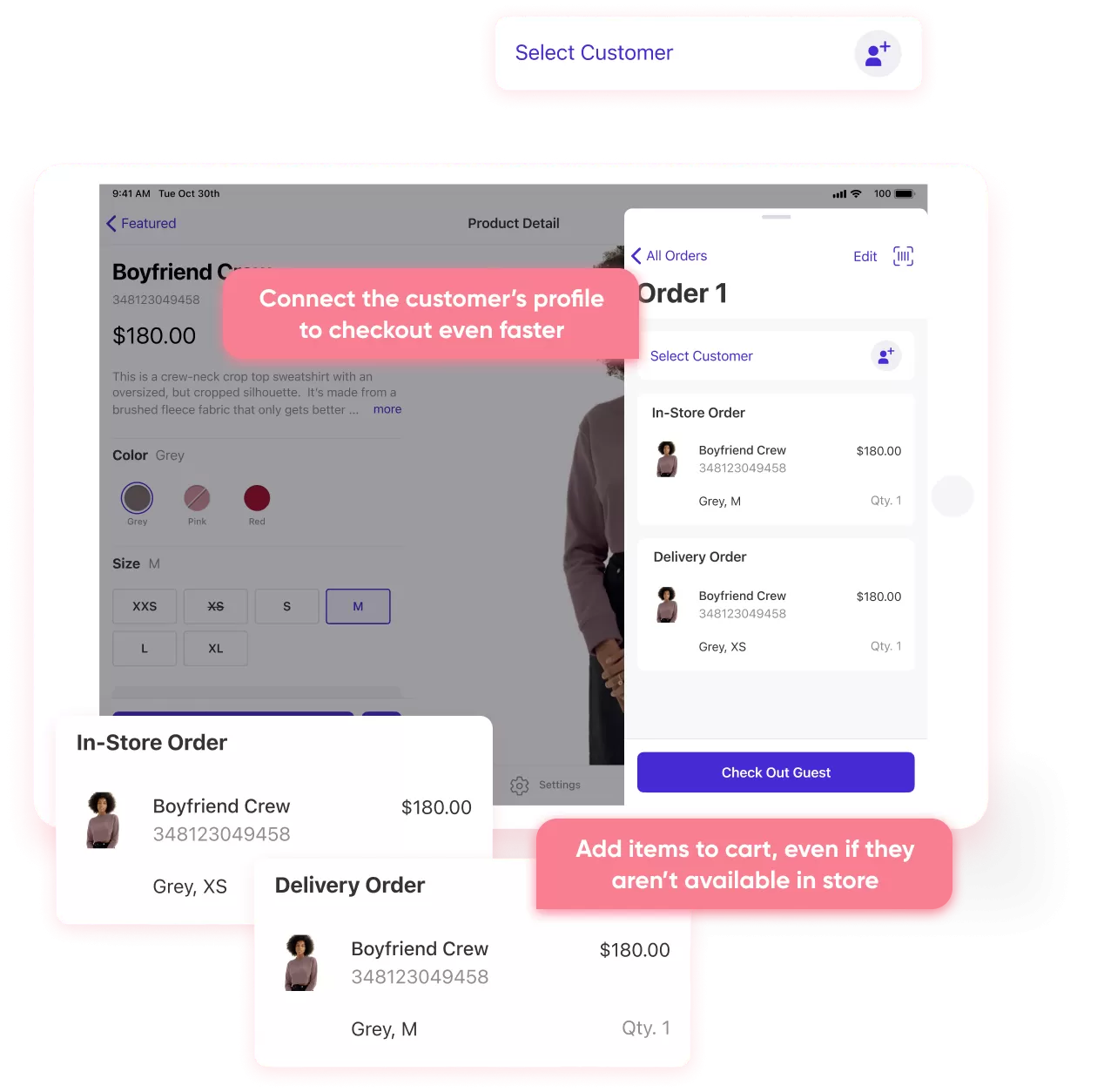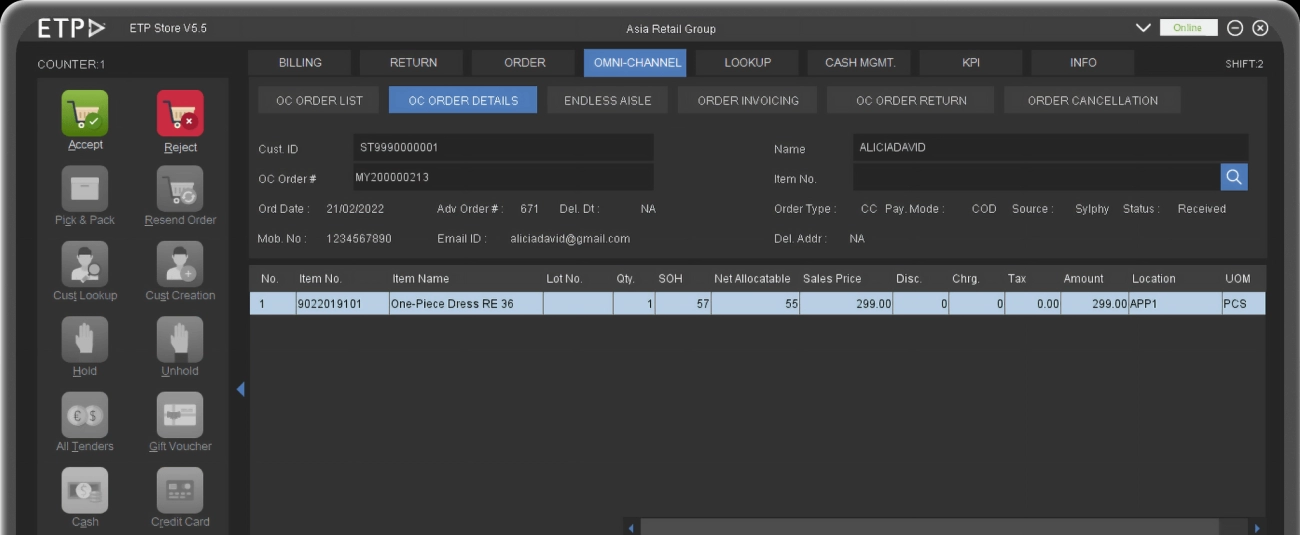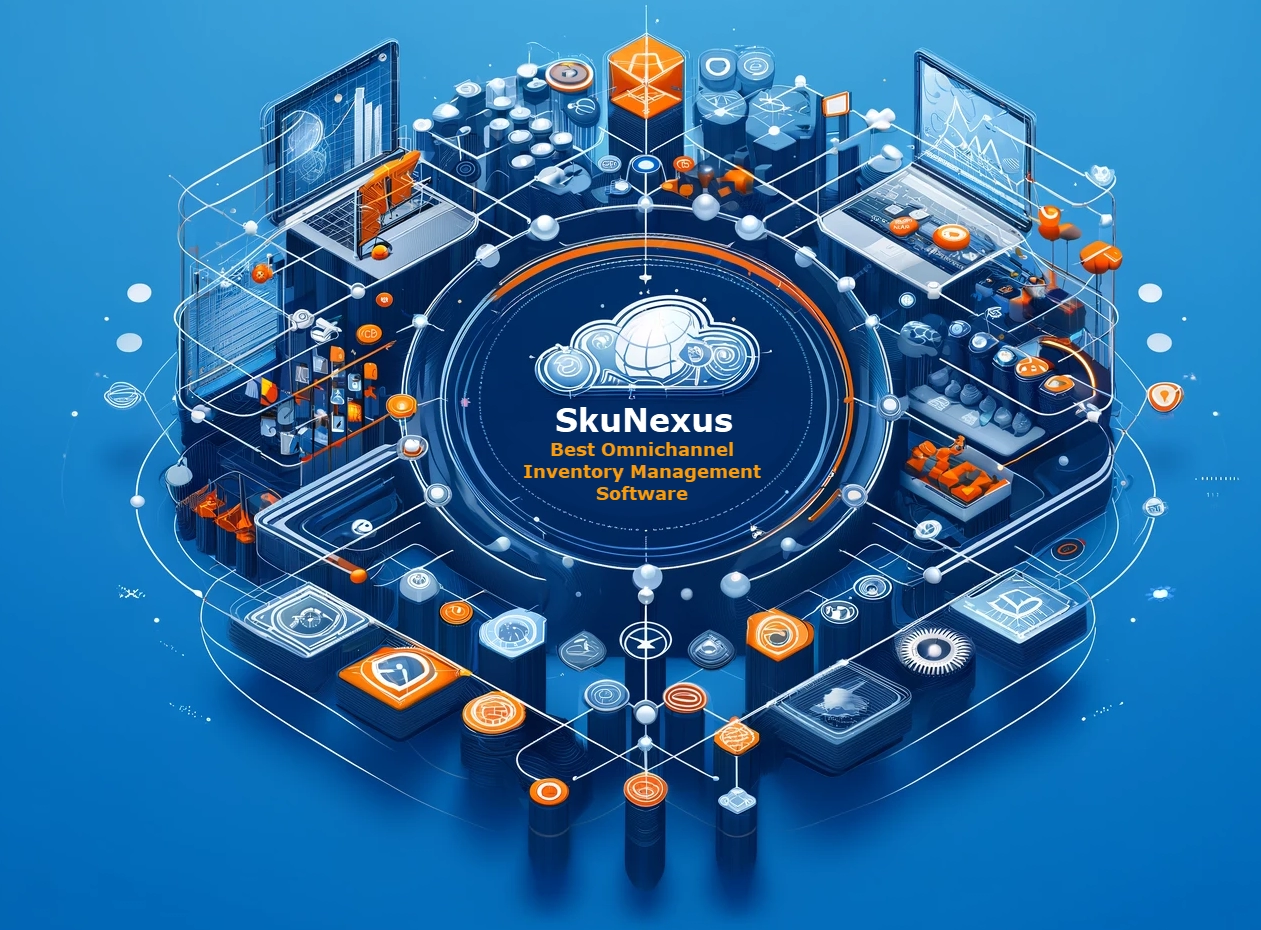POS Hardware for Omni-Channel Retailers Optimize Sales and Integration

If you’re running an omni-channel retail business, you know how crucial it is to have the right tech supporting every customer interaction—whether in-store, online, or on mobile. Choosing the best POS hardware for omni-channel retailers isn’t just about ringing up sales; it’s about creating a seamless experience across multiple channels that keeps customers coming back.
In this guide, you’ll discover what makes POS hardware truly effective in an omni-channel setting—think integration, speed, security, and flexibility—all tailored to meet your business’s unique demands. Plus, we’ll show you how SDLPOS delivers smart, reliable solutions that help retailers like you unify operations and boost sales effortlessly.
Ready to upgrade your retail tech and stay ahead in today’s fast-evolving market? Let’s dive in.
Omni Channel Retail and POS Hardware Needs
What is Omni Channel Retail
Omni channel retail blends physical stores and digital sales channels into one seamless shopping experience. It means customers can shop online, in-store, or via mobile apps, and expect consistent service, product availability, and integrated order fulfillment. This approach demands point of sale (POS) hardware that supports multiple sales touchpoints in real time, tracking inventory and customer data across channels.
Challenges Omni Channel Retailers Face with POS Hardware
Managing a business that spans online and offline channels isn’t easy. Here are some key challenges retailers face with POS hardware in omni channel settings:
- Integration Difficulties: Connecting POS systems with eCommerce platforms, inventory, and CRM software can be complex.
- Real-time Data Syncing: Maintaining accurate inventory and sales data across all channels without delays.
- Payment Flexibility: Supporting diverse payment methods like EMV chip cards, NFC mobile wallets, and contactless payments securely.
- Hardware Reliability: Devices must withstand heavy daily use in busy physical stores but also handle mobile or pop-up selling.
- Speed and Performance: Slow transactions hurt customer experience and staff efficiency.
Essential Features of POS Hardware for Omni Channel Retailers
To overcome these challenges, POS hardware must be purpose-built for the omni channel retail environment. Here’s what to look for:
- Integration Flexibility: POS hardware that easily connects with various sales platforms, including online storefronts and mobile apps.
- Speed and Responsiveness: Fast processing capabilities to reduce customer wait times and streamline checkout.
- Durability: Rugged designs that can handle the demands of a retail environment, including spills, drops, and long hours.
- Multi-payment Support: Hardware that supports EMV, NFC, mobile wallets, and traditional payment types with top security standards.
- Unified Data Management: Devices that help sync sales, inventory, and customer data seamlessly in real time.
Understanding these needs helps retailers pick POS systems for multi channel retail that keep customers happy and stores running smoothly. With the right POS hardware, omni channel retailers can truly bridge the gap between physical and digital sales efficiently.
Core POS Hardware Components for Omni Channel Retailers

When running an omni channel retail operation, having the right POS hardware is critical to keep sales smooth across both physical and digital channels. Here’s a breakdown of the essential components every retailer should consider:
POS Terminals and Touchscreen Monitors
At the heart of your setup are POS terminals with reliable, responsive touchscreen monitors. These devices act as your sales command center—processing transactions quickly and accurately whether in-store or part of a larger multi-channel system. Fast, intuitive touchscreens reduce checkout time and improve customer experience.
Barcode Scanners and Receipt Printers
Barcode scanners are a must for speeding up checkout and managing inventory in real time. Make sure your scanners are compatible with product codes across all sales platforms. Paired with this, receipt printers provide customers with purchase confirmation and support returns or exchanges, essential for omni channel returns policies.
Cash Drawers and Payment Terminals
Your setup needs cash drawers that integrate seamlessly with terminals. For payment processing, look for payment terminals that handle multiple payment methods—EMV chip cards, NFC contactless payments, and mobile wallets like Apple Pay or Google Pay. Supporting these popular options meets customer expectations for convenience and security.
Customer Facing Displays and Interaction Devices
Engage customers by using customer-facing displays that show transaction details and promotions in real time. Devices like signature pads or touchscreen kiosks offer interactive experiences, making checkout more transparent and efficient, especially when blending in-store and online activity.
Network and Connectivity Hardware for Integration
Smooth operation depends on solid network and connectivity hardware—routers, switches, and Wi-Fi access points. This ensures your POS systems sync sales data instantly across stores and online platforms. Reliable connectivity prevents downtime and supports real-time inventory and order management, key to true omni channel retail success.
Investing in these core POS hardware components builds a strong foundation for your omni channel retail business, enabling integration across channels, fast transactions, secure payments, and better customer interaction.
Criteria for Selecting POS Hardware for Omni Channel Retailers
Choosing the right POS hardware for omni channel retailers means balancing several important factors to ensure your system runs smoothly across all your sales channels. Here’s what to prioritize:
Compatibility with Sales Platforms and Software
Your POS hardware must work seamlessly with various sales platforms and software, both online and offline. Whether you’re using eCommerce platforms, mobile apps, or in-store registers, hardware that supports integration with popular retail POS systems for multi channel retail is essential. This ensures consistent inventory management, sales tracking, and customer data syncing across all channels.
Scalability for Multi Store and Channel Growth
As your business expands, your point of sale hardware should scale easily. Look for systems designed with scalability in mind, supporting multiple locations and sales channels without needing full hardware replacements. This reduces downtime and extra costs when opening new stores or adding mobile sales points.
Security Features for Payment and Data Protection
Security is critical in retail right now. Choose secure payment terminals for retail that support the latest standards like EMV, NFC payments, and end-to-end encryption. Your POS hardware should also protect sensitive data across channels, reducing risks of breaches or fraud while complying with PCI standards.
Ease of Installation and Maintenance
Retail environments move fast—your POS devices should be straightforward to set up and maintain. Opt for hardware that offers simple plug-and-play installation, remote management options, and reliable technical support. This cuts down on downtime and keeps your business running efficiently.
Durability and Performance in Busy Retail Settings
Retail can be hectic and hardware will take a beating. Prioritize durable equipment built to withstand heavy daily use. Fast processing speeds and reliable connectivity ensure checkout lines move quickly and customers have a smooth shopping experience whether in-store or online.
Key Takeaways for POS Hardware Selection
- Compatibility: Supports online and offline sales platforms
- Scalability: Grows with your multi store, omni channel footprint
- Security: Protects payments and customer data with current standards
- Ease of Use: Simple to install and easy to maintain
- Durability: Built tough for high traffic retail environments
Picking POS hardware with these criteria gives you a solid foundation to manage an efficient, secure, and flexible omni channel retail operation tailored for the fast-paced US market.
How SDLPOS Supports Omni Channel Retailers with Superior POS Hardware
When it comes to POS hardware for omni channel retailers, SDLPOS stands out by offering a product range built specifically for the demands of multi-channel retail environments. Their solutions are designed to seamlessly connect physical and digital sales channels, ensuring smooth operations whether you’re managing a single store or multiple locations.
Product Range Designed for Omni Channel Use
SDLPOS provides a variety of hardware options suited for omni channel retail, including:
- Reliable POS terminals and touchscreen monitors built for fast, intuitive transactions.
- Barcode scanners and receipt printers designed for quick scanning and clear, professional receipts.
- Cash drawers and secure payment terminals compatible with EMV, NFC, and mobile wallets.
- Customer-facing displays that improve shopper engagement and promote upsells.
- Network hardware that supports fast, stable connections across all sales channels.
Each piece of hardware is robust, made to handle busy retail spaces, supporting the need for durability and high performance.
Integration and Customization Capabilities
One major challenge omni channel retailers face is making sure all their systems talk smoothly to each other. SDLPOS excels by offering hardware compatible with leading POS software platforms used in multi location retail setups. Whether you’re syncing with your eCommerce backend or integrating in-store and mobile sales data, SDLPOS hardware is built with flexibility in mind.
Customization options let you tailor the hardware to your unique workflows, ensuring the best fit for your business model and customer experience goals. From setting up mobile POS stations to adding customer interaction devices, SDLPOS supports the hardware configurations that omni channel retail demands.
Real World Examples of SDLPOS Success
Many omni channel retailers across the U.S. rely on SDLPOS equipment to power their operations. For example:
- A regional apparel chain used SDLPOS devices to unify inventory tracking across online and physical stores, helping reduce stockouts and improve customer satisfaction.
- A specialty food retailer integrated SDLPOS payment terminals supporting contactless and mobile wallet payments, speeding up checkout during busy hours.
- A multi-store electronics retailer leveraged SDLPOS’ customizable hardware setups to deploy mobile POS stations at events and popup locations.
These cases show how SDLPOS hardware delivers in fast, complex retail environments.
After Sales Support and Warranty
SDLPOS understands that reliable hardware needs solid backing. They provide comprehensive after sales support, including technical help and troubleshooting to minimize downtime. Their warranty programs give retailers peace of mind, ensuring your investment is protected as you grow and adapt your omni channel sales strategy.
With SDLPOS, omni channel retailers in the United States get high-quality, adaptable retail POS hardware integration that keeps both in-store and online operations running smoothly, backed by strong service and support.
Best Practices to Optimize POS Hardware for Omni Channel Retailers

To get the most out of your POS hardware for omni channel retailers, it’s important to follow some proven best practices. These help ensure smooth operations, improve customer experience, and boost overall efficiency across all your sales channels.
Synchronize Inventory and Sales Data
One of the biggest challenges in omni channel retail is keeping your inventory and sales data consistent across online stores, physical locations, and mobile points of sale. Using POS systems that allow real-time syncing:
- Prevents overselling or stockouts
- Gives you accurate insights into product performance
- Makes order fulfillment seamless when customers buy through different channels
Always choose POS hardware and software that support automatic data synchronization to keep every storefront and channel updated instantly.
Use POS Data Analytics to Improve Customer Insights and Marketing
Modern retail POS hardware integration includes collecting plenty of useful data. Leveraging this data with analytics tools allows you to:
- Track customer buying patterns across platforms
- Offer personalized deals and promotions tailored to specific shopping habits
- Identify high-performing products and slow movers
By turning raw sales data into actionable insights, your omni channel retail business can improve customer loyalty and marketing effectiveness.
Focus on Staff Training and Routine Maintenance
POS hardware works best when your team knows how to use it well and keep it in good shape. For busy omni channel retailers:
- Train staff regularly on new system features and troubleshooting
- Schedule routine maintenance checks on all POS devices
- Keep software updated to minimize security risks and glitches
Proper training and upkeep reduce downtime and help maintain fast, reliable checkout experiences wherever your customers shop.
Leverage Mobile POS for Flexible Sales Locations
To truly capitalize on omni channel selling, your POS hardware must be flexible. Mobile POS hardware for retailers lets you:
- Process sales anywhere in-store or at pop-up events
- Speed up checkout lines during peak times
- Offer on-the-spot promotions or assistance
Mobile setups work alongside core systems, making your retail environment more responsive and customer-friendly.
By syncing data across channels, using POS analytics smartly, training staff, and adopting mobile POS solutions, you’ll optimize your retail POS hardware for omni channel success. These best practices ensure your system supports growth, security, and a top-notch customer experience in today’s competitive US retail market.
Future Trends in POS Hardware for Omni Channel Retail
As omni channel retail continues to evolve, POS hardware must keep up with new technologies to meet customer expectations and improve operational efficiency. Here’s what’s shaping the future of retail POS hardware integration and how you can prepare your business for these changes.
Emerging Technologies in POS Hardware
- IoT-Enabled POS Devices: Internet of Things (IoT) is making POS systems smarter by connecting devices across your store and online channels. This helps optimize inventory tracking, real-time sales updates, and proactive maintenance.
- AI-Powered Systems: Artificial intelligence is being used to analyze sales trends, predict customer needs, and automate routine tasks. AI-driven POS hardware can personalize shopping experiences and offer data-driven insights to improve marketing and staffing decisions.
- Contactless Payment Growth: The shift toward contactless payment terminals like EMV chip cards, NFC, and mobile wallets (Apple Pay, Google Pay) is accelerating. Expect POS hardware that supports faster, secure, and touch-free transactions to be the norm.
Integration with Augmented Reality and Customer Experience Tools
- AR-Enabled POS Hardware is starting to enhance how shoppers interact with products in-store and online. This includes visualizing products through augmented reality or interactive displays that improve engagement.
- Future-ready POS devices will more seamlessly connect with apps, CRM software, and eCommerce platforms to deliver a consistent and enriched shopping journey across all channels.
Preparing Your Retail Business for Future Proof POS Solutions
To stay competitive in omni channel retail, focus on these key factors when selecting or upgrading your POS hardware:
- Scalability and Flexibility: Choose hardware that easily adapts to new technologies without costly replacements.
- Software Compatibility: Your POS should smoothly connect with eCommerce systems, inventory management, and customer loyalty programs.
- Strong Security Features to handle evolving payment methods and protect customer data.
- Regular Updates and Support from hardware providers to keep devices running efficiently and integrate new tech as it arrives.
By embracing these future trends, your retail business will be well-equipped to deliver seamless, secure, and engaging shopping experiences — whether customers shop in-store, online, or anywhere in between.
